rts-poky¶
The following section is applicable to:

This section provides the steps to build an ECI rts-poky (ECI-R) image.
Prerequisite
Make sure that you complete the steps in Setting up ECI Build before proceeding to build an ECI rts-poky image.
Building ECI ``rts-poky`` Image
The ECI rts-poky Yocto target image provides the Real-Time Systems Hypervisor (RTH) virtualized Debian Desktop OS (GPOS) and ECI privileged OS (POS) together with software utilities to manage virtual and privileged machines. Do the following to build the image:
Copy the Real-Time Hypervisor (RTH) package “RTH-Release5.X.XX.XXXXX.zip” to the
ECI/rth_releases/directory and unzip it. For details on obtaining the RTH package, refer to Real-Time Systems Hypervisor (RTH).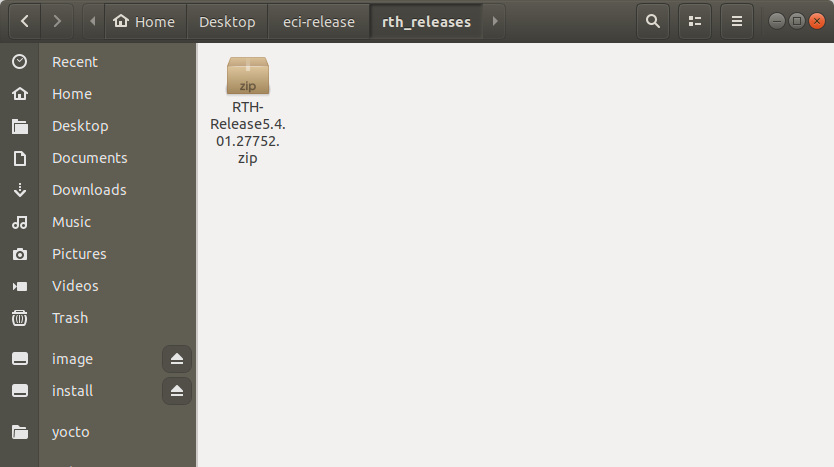
Extract the archive. In Ubuntu, right-click the archive and select Extract Here.
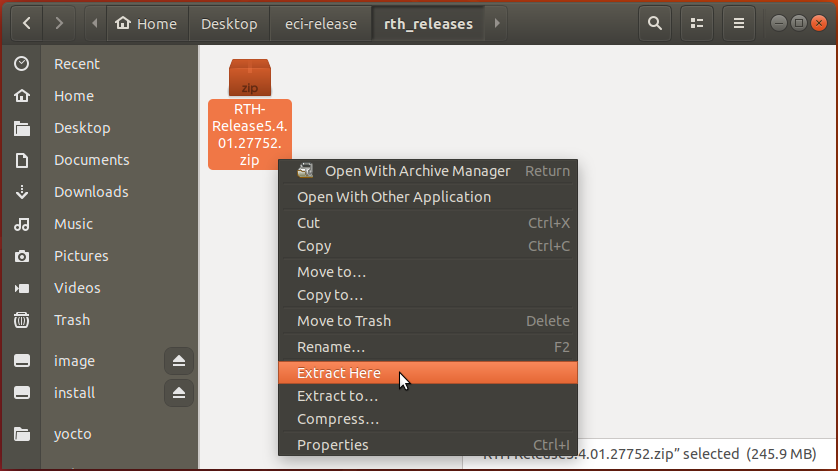
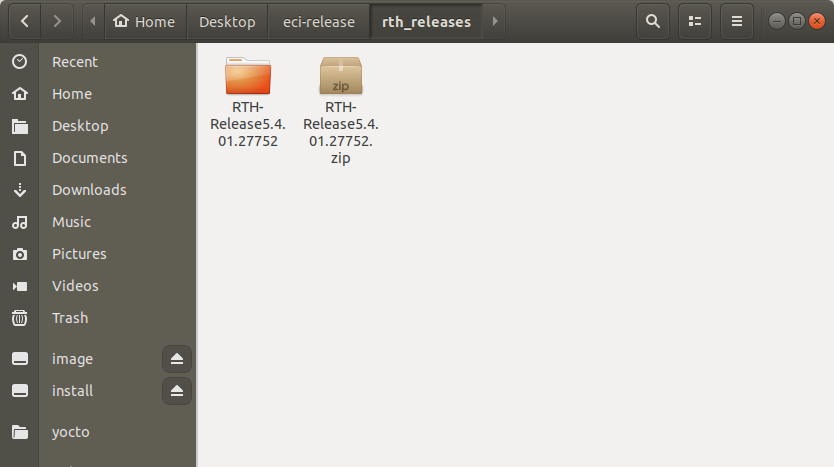
Run the setup script:
$ ./setup.sh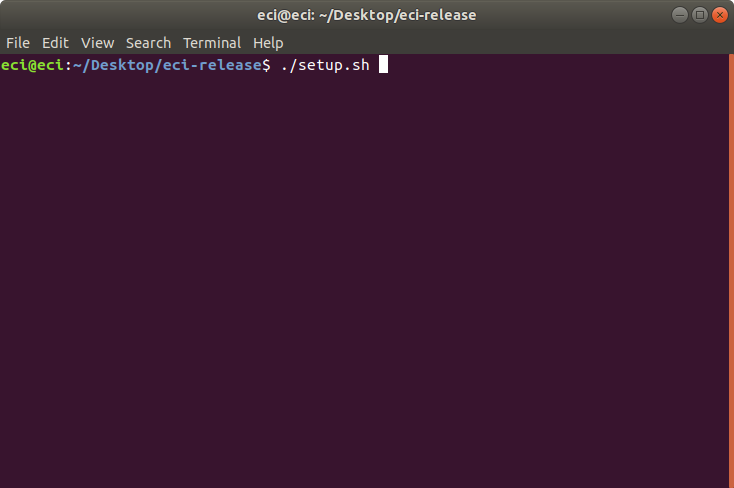
A list of pre-configured use cases will be displayed. Select
customto start configuring a custom build.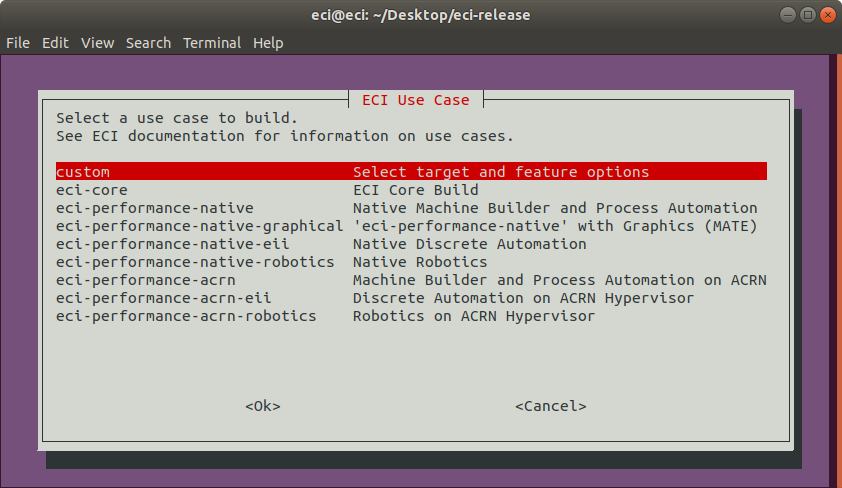
A list of available build targets will be displayed. Select
rts-pokyfrom the list.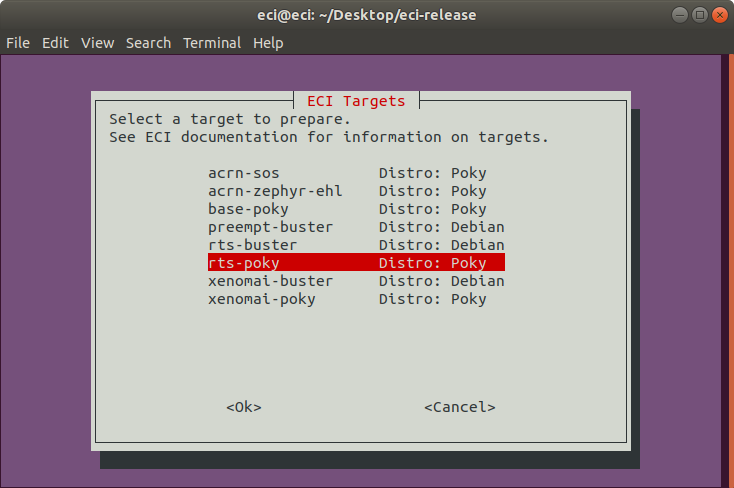
A list of features available for
rts-pokywill be displayed. Select or deselect the features that you want to include in the image. Use the arrow keys to scroll through the list of options and use the spacebar to toggle the state. Press enter to finalize the selection.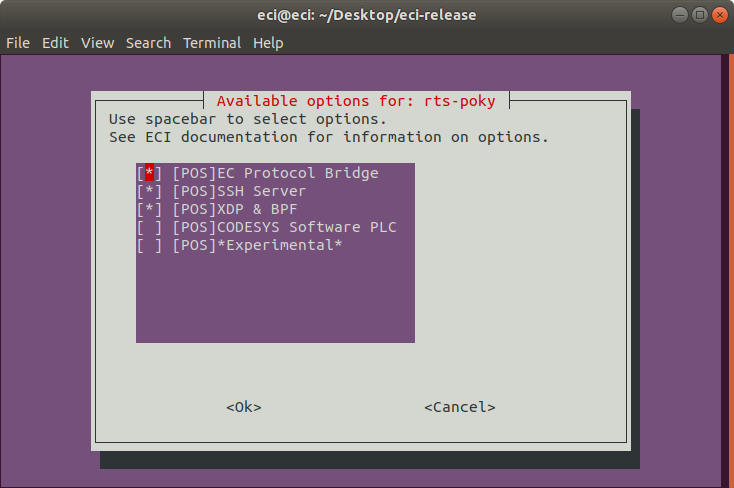
The following table lists the available options:
Feature Option
Description
[POS] EC Protocol Bridge
Edge Control Protocol Bridge bridges various industrial protocols together, effectively providing a translation from one protocol to another.
[POS] SSH Server
Adds an SSH server to the target image.
[POS] XDP & BPF
Allows packets to be reflected, filtered, or redirected without traversing networking stack. Selecting this feature will add eBPF and XDP features to the target image.
[POS] CODESYS Software PLC
CODESYS Software PLC provides a Linux runtime that allows control applications to execute on Linux-based systems. This feature requires a CODESYS .deb file to be added to the build environment.
[All]*Experimental*
Enables experimental features.
The setup script will begin configuring the assets needed to build the target image. Depending on the feature options selected and the state of the build environment, a few notifications might be displayed:
RTH Hypervisor Linux BSP package not found
If the RTH package has not been setup correctly, an error will occur. Follow the steps listed in Real-Time Systems Hypervisor (RTH) to obtain the RTH package.
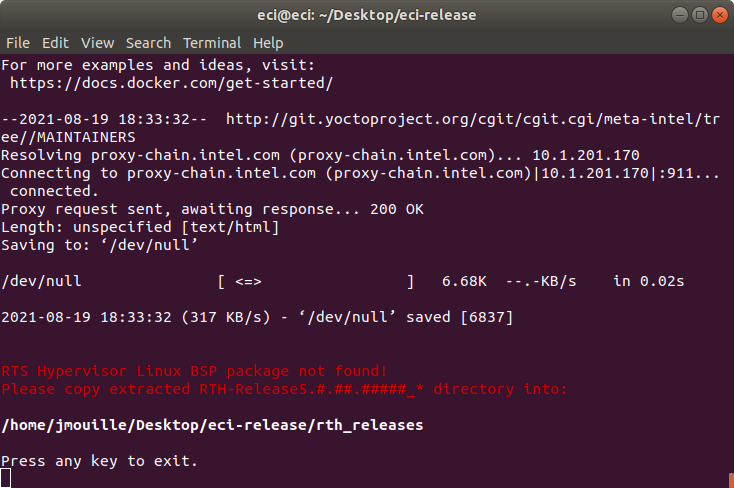
Build directory already exists
If the setup script is not building the target for the first time, the script will prompt:
Build directory ecs-rts-<buster> already exists. Do you want to clean the cached build? y/[n]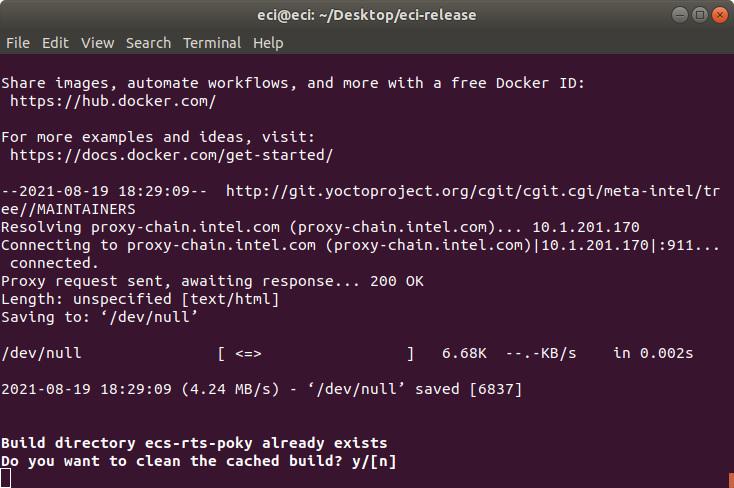
Press n to retain the target build cache, or press y to delete target build cache.
Note
It is recommended that you delete the target build cache if the target source was modified or the previous build was incomplete. Retaining the target build cache will reduce the build time, but might cause build errors if the target source was modified or the previous build was incomplete. If build errors occur, rerun the setup script and choose y at this prompt.
For all other notifications, click the following links:
After setting up the build target, the script will prompt:
Do you want to run an automated build? y/[n].
To perform an automated build, press y at the prompt.

To perform a manual build, press n at the prompt. The setup script will display a completion message and the steps that you need to perform a build manually.
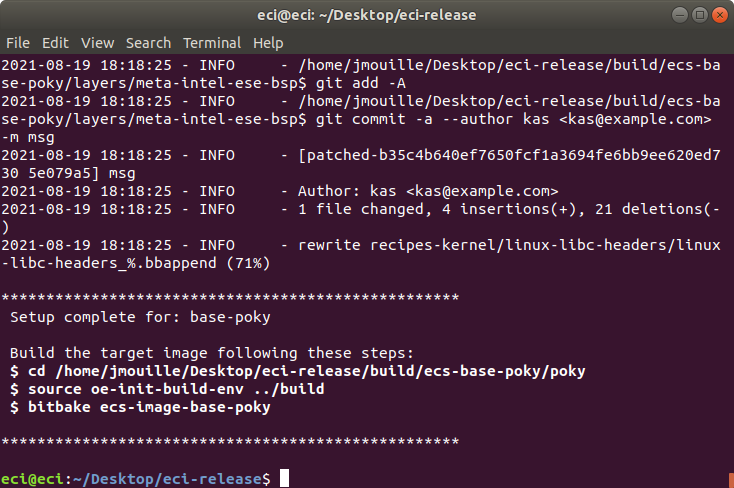
Perform the steps provided by the setup script. These steps will start the build process. In this example, the following steps are performed:
$ cd /yocto/tgr-build-setup/build/ecs-rts-poky/poky $ source oe-init-build-env ../build $ bitbake -c do_package_write_deb ecs-image-xenomai-poky-rth-package ecs-image-base-poky-rth-package
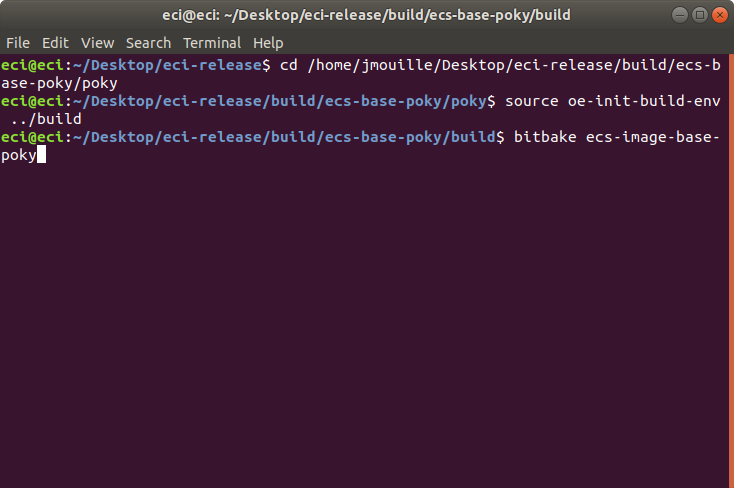
The build typically takes a very long time. A Linux build system with the recommended specifications might take about 1-2 hours to complete. A Linux build system with the minimum specifications might take over 6 hours to complete. Refer Linux Build System for the recommended specifications.
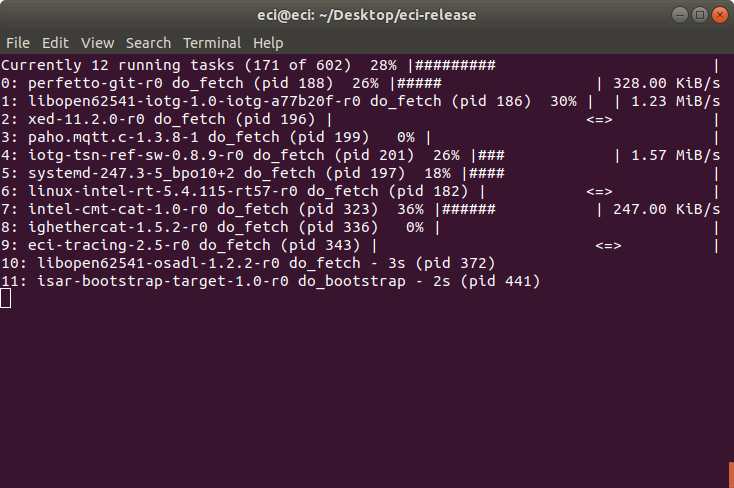
After the build completes, refer Installing ECI-R to install the ECI image.